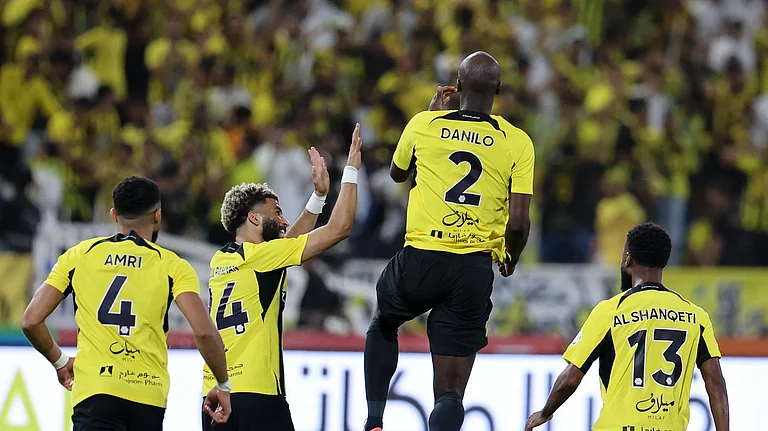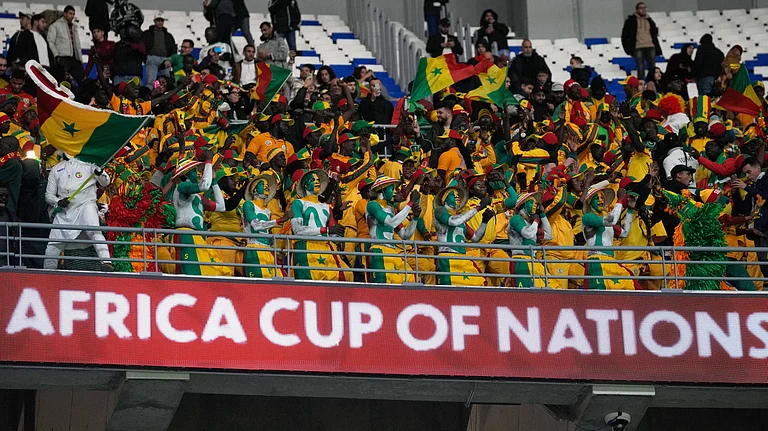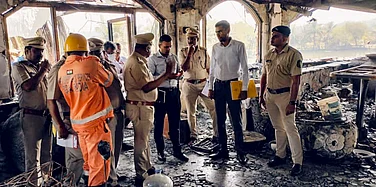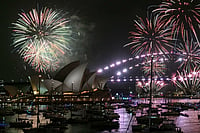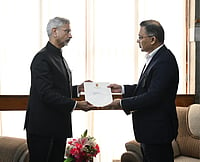EVEN before the tabling of the Srikrishna Commission report, Shiv Sena chief Bal Thackeray had paved the way to extricate himself and the party from potential indictment. Notable among them was his observation on commissions of inquiry: "Commissions are a waste of time since they end up being irrelevant. They make no difference between recommendations and judgements. There is no need for them." Specific to the Srikrishna findings, a fortnight before the release of the report he shrugged away any possible prosecution with: "I don't care. Anyway he cannot hang me."
But the noose has begun tightening. First, with what has been perceived as a "completely irresponsible and pompous" statement made by chief minister Manohar Joshi while announcing his rejection of the report on the floor of the House. Second, the slew of public interest litigations (PILs) that are likely to follow. The first of these has already been filed by the Samajwadi Party.
While the Sena has been strident in rubbishing the Commission's findings on the ground that Justice Srikrishna's conclusions are not backed by solid evidence, activists and lawyers associated with the probe say the report is rooted in damning evidence. Three cases are cited that assign culpability to the Sena chief, his party and the Bombay police. Mahanagar journalist Yuvraj Mohite's watertight testimony against Thackeray showing his communal bias; Joshi's feeble justification for employing the term "landya" (a derogatory term for the circumcised) to describe Muslims; and one of the starkest findings—Justice Srikrishna's notings on the Kalachowky police station—is by any reckoning hard evidence.
The jurisdiction of Kalachowky police station is described in the report as "a Hindu majority area with few Muslim pockets. The Shiv Sena has considerable hold in this area.... There is no known Muslim organisation, nor noticeable activity of Muslim activists or sympathisers in the area." Yet in the riots which came in the wake of the Babri Masjid demolition in December 1992, the victims of all four incidents of communal violence were Muslims. The report notes that even incidents like these and the repeated attacks on the Dhondpada Masjid were not enough for the policemen to swing into action. The Commission concludes that the police seemed to have turned a blind eye when the violence was directed against Muslims.
Through depositions from police officers, Justice Srikrishna virtually proves that the communal violence was instigated by Sena shakha pramukhs though there was no provocation from Muslims. This virtually blows the lid off the "theory of retaliation" that Sena leaders like Madhukar Sarpotdar have been propounding.
According to the report, "senior police inspector (Kalachowky) admitted that the shakha pramukhs were accompanying violent mobs during different communal incidents and inciting Hindu mobs. Some of the major incidents which occurred in this area clearly bring out the fact that there was a secret meeting of the Shiv Sainiks to go on the rampage 'to teach the Muslims a lesson' for what had happened in other areas. The incidents which happened in December 1992 obviously happened even before the so-called Hindu backlash was unleashed."
The Commission is relentless in highlighting the partisan role of the policemen. As the flames soared, so did the communal passions within the police force who began viewing the pillaging Hindu mobs with a Nelson's eye. The first incident of communal violence in January 1993 also involved the killing of a Muslim returning home from namaz. During the same month, "Hindu shops were rarely damaged" while there were "selective attacks on Muslim establishments". Even so, maha aartis were conducted with impunity in spite of the police knowing that they were not "religious."
Then on January 9, 1993, about 14,000 Hindus, led by local Sena leaders Bhai Shingre, Ramakant Rahate, Ravi Chavan, Shridhar Kadam and Anil Kadam "who instigated the mobs to violence and were also giving slogans against Muslims" attacked the Dhondpada mosque. The same day, sainiks, demanding the unconditional release of some of the miscreants arrested for the violence and detained at the Kalachowky police station, went berserk, damaging vehicles and ransacking Muslim establishments.
Despite the violence and the communal flare-up, the police did not prevent the BJP and Sena activists from taking out a procession, thus adding to the tension. "Surprisingly," reads the report, "the police meekly allowed a maha aarti led by the local shakha pramukh, Deepak Shinde, and other Sena and BJP leaders at the Hanuman Temple at Shravan Yeswante Chowk at 7 pm." If anything, the police connived with those fuelling the violence. Sixty-eight people were accused of the riots in the Muslim-dominated Bombay Dock Labour Board Colony—among whom the 12 Hindu accused were "not arrested and no case was filed". Notices put up by the Sena and the BJP at street-corners preaching Muslim-bashing were not removed by the police though these were stoking the violence.
Even more shocking was the ludicrous "ignorance" of Krishnalal Bishnoi, DCP of the zone. In spite of being roughed up by Hindu mobs, Bishnoi maintained that "the police could not ascertain whether the role played by those persons (who indulged in acts of violence) was in their individual capacity or as constituents of the organisations to which they belonged". This despite many sainiks admitting that they were prompted by their leaders; despite the involvement of shakha pramukhs in violent incidents; despite the statement of an accused which admitted to a secret meeting by local sainiks held to teach a lesson to the Muslims.
Castigating the senior police officer, the Commission's report notes: "Either DCP Bishnoi is wholly naive, or completely under political pressure, to deny the obvious. He does not deny that the whole of his zone is a stronghold of the Sena and most of the Hindus in his zone were supporters of the Sena. The attempt at sani-tising the issue is brought out by his admission that his perception was based on the fact that there was nothing to indicate that the Shiv Sena as an organisation had taken any stand, though it was possible that in some incidents of communal violence Shiv Sainiks and local shakha pramukhs were involved. (Daniel Adams would have been hard put to make out a better defence!)."
Justice Srikrishna points out that DCP Bishnoi, however, admitted that the mobs were from the area and that "unless local Shiv Sena shakha pramukhs led them they were likely to lose credibility in the eyes of the Hindu public and therefore they might have been forced to incite Hindus." If this was the perception of a senior police officer of the rank of DCP, argues Justice Srikrishna, the "Commission finds it difficult to imagine what could have been the perception at the lower levels. Perhaps this explains why the communal violence continued unabated in the area for almost 10 days".
Further, the Commission points out that as the communal cleansing reached a crescendo, Bishnoi blatantly disregarded orders from the then police commissioner to hand over the riotous area to the army columns. This despite the commissioner's express message—"again and again I am repeating this" (to call out the army). The report notes: "The stand that he (Bishnoi) did not feel the need to hand over the situation to the army at any time, as the situation had been brought under control in his zone, does not hold water."
But then nothing at Kalachowky police station does. Srikrishna's summation of the police station is lucid: "There is no doubt that the communal violence, arson, looting and incidents of attacks on the Muslim properties in this jurisdiction were engineered by the Shiv Sena and Shiv Sainiks after their secret meeting in which it was decided to teach a lesson to Muslims. That the police pretend to be unaware of this only suggests... insufferable naivete or patent partisanship."
The complicity of the policemen and the Sena has been very clearly established, say activists. They point out that the Sena's offensive against the findings of the Commission is only the party's defence mechanism at work. And if the alliance government allows the report to gather and then bite the dust, it only means one thing. That they intend letting Thackeray, rather than truth, prevail.







